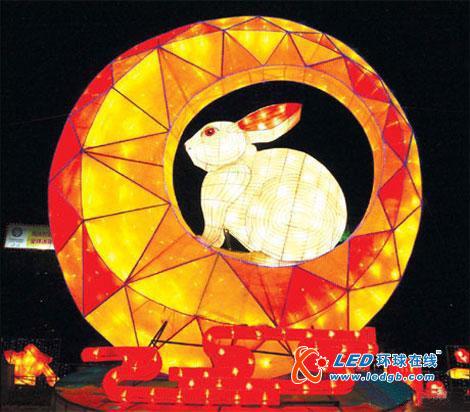Lantern Festival organizers are using more energy-efficient lighting during this year's events. The lantern above features the Chinese star of 2011 - the rabbit.

Every year in China millions and millions of colorful lanterns are hung across the country to raise the Spring Festival atmosphere to its climax. The Chinese admire elaborate lantern shows at temple fairs and have fun solving riddles written on the lanterns. To many, the lantern shows are one of the most anticipated parts of the Spring Festival.Some Chinese also decorate their houses by hanging up colorful ornamental lanterns of various shapes and sizes.
However, the 2011 Chinese lantern party has seen a major environmental change compared to previous years.
Because of increased public awareness about environmental protection a major green campaign has strongly influenced this year's lantern fairs. Low-carbon and energy-saving elements have been injected into light shows, making this time-honored tradition a platform to promote an eco-friendly lifestyle.
In an effort to answer the environmental call, show organizers have incorporated energy efficiency into this ancient cultural tradition. One such method has been to replace fluorescent lamps with energy-saving lights in order to reduce electricity consumption.
As the energy-saving concept has gradually became the focus of the public, it has inevitably infiltrated into traditional festivals and greatly influenced the old practice of a variety of folk cultural activities, says Xu Decheng, deputy director of the tourism bureau of Nanjing's Qinhuai district.
Xu is in charge of the Qinhuai Lantern Fair, which is one of China's largest lantern carnivals attracting more than 5 million visitors each year during the Spring Festival period.
According to Xu, more than 80 percent of the 400,000 lanterns on display will be illuminated with LED light bulbs and other types of energy-saving lights reducing energy consumption by nearly 50 percent compared to previous years.
Despite the high cost of purchasing energy-saving lamps, it will benefit us with substantial savings by reducing electricity fees in the long run, Xu says.
As well as the high luminous efficiency and good glowing effect of energy-saving lights, their low voltage makes them much safer than ordinary bulbs and more suitable to be showcased at crowded lantern fairs. To better achieve environment conservation goals, Xu says the tourism bureau also used recycled materials, such as discarded beverage bottles and cans, to make lanterns and decorations.
He says the bureau's green effort has been a talking point among tourists. Many visitors are amazed by our stylish green light show and learned the importance of low-carbon life to the sustainable development of our living environment, Xu says.





